Operation Spiderweb
REALLY BAD things happened to Russia, but does destroying a few aging bombers actually change the war? Will Putin abandon his main hunt for victory in Ukraine to chase psychological warfare squirrels?
On the eve of Istanbul peace talks, Russia suffered coordinated attacks across its territory. In Bryansk, Ukrainian sabotage teams detonated explosives beneath a railroad overpass as a passenger train approached, killing 10 civilians and injuring scores—a blatant terrorist strike. Nearby, the Kursk region saw another rail bridge destroyed, temporarily crippling critical infrastructure.
But the REALLY BAD blow for Russia came a few hours later with “Operation Spiderweb” — an unprecedented asymmetric strike by NATO and its Ukrainian proxies against five deep-inland Russian airbases: Belaya, Dyagilevo, Ivanovo Severny, Olenya, and Ukrainka.
Swarms of drones were launched from concealed civilian trucks positioned near the targeted installations, in what appears to have been a meticulously coordinated multi-axis assault on Russia’s strategic bomber force. The message was unmistakable: NATO, operating through Ukrainian hands, can strike at will, anywhere inside Russia’s supposed hinterland.
The operation involved 117 drones and highlighted not only the vulnerability of Russia’s long-range aviation assets — including the Tu-95 and Tu-22M3 — but also exposed critical lapses in rear-area security. More than the physical damage, which Russian sources claim was limited, the psychological and strategic impact has been severe. Airbases long considered outside the range of Ukrainian capabilities have now proven to be within reach, challenging Moscow’s assumptions about the depth of its strategic sanctuary.
While the war in Ukraine has revealed NATO’s inability to supply, yet alone conduct, peer-to-peer combat, Operation Spiderweb is a textbook demonstration of NATO’s evolving proxy warfare model: Western ISR (intelligence, surveillance, and reconnaissance), targeting infrastructure, and operational planning are fused with Ukrainian execution. The effect is to give NATO the ability to project force far beyond its borders, while minimizing political liabilities thanks to its Ukrainian proxy mask. The symbolism is potent — Russia’s most prestigious air assets, struck not at the front, but in the rear — and the Kremlin must now account for a reality in which no target is truly safe.
In the aftermath of the attack, the Ukrainian informational "Mighty Wurlitzer" —amplified by Western media organs—went full blast with inflated claims that 40 Russian bombers were destroyed. However, verifiable imagery and credible assessments suggest the actual losses number fewer than ten. The most successful strikes were concentrated at Olenya and Belaya airbases, while the remaining three targets sustained only superficial or ineffective damage. Russian commentators—given the Kremlin’s silence on the matter—likely err on the side of minimization, but even their downplayed accounts remain far closer to the truth than Kiev’s theatrically inflated narrative.
What matters more than raw aircraft losses is the vulnerability the operation revealed. The attacks exposed significant gaps in Russian base security and air defense coordination in a new era where low-cost drone swarms can punch well above their weight. Tactically, the damage is modest; strategically, it is a wake-up call. Russia’s strategic bomber force remains largely intact, but its presumed invulnerability has been punctured. The psychological blow—especially in terms of deterrence and global perception—may prove longer lasting than the physical damage itself.
Russia’s strategic bombers, which have played a central role in sustained strikes against Ukrainian infrastructure, are unquestionably legitimate military targets. Russian forensic analysis reportedly confirms the use of U.S.-origin C4 explosives in the drone attacks, suggesting direct Western involvement in their execution. However, the method of delivery—launching drones from civilian vehicles—strains the boundaries of international law. More troubling still, the Bryansk train bombing, which targeted civilians using NATO-supplied munitions, crosses into the realm of unambiguous terrorism.
The operational authorship of “Spiderweb” becomes clearer when viewed through the lens of insider reporting. According to Rezident, a consistently credible Ukrainian opposition Telegram channel, British intelligence played the principal role in both the planning and coordination of this attack—echoing their alleged involvement in the Crimean Bridge sabotage. As Rezident put it:
“Our source in the OP [Office of the President] said that yesterday’s special operation, like the blowing up of the Crimean Bridge, was prepared by British intelligence, using its agents in Russian regions. The Ukrainians were not involved in the active phase, but only delivered parts to various warehouses. Satellite repeaters were tuned to NATO frequency, enabling the raid. Thanks to the Center for Informed PsyOps, the media effect was achieved and the inflated number of 40 destroyed aircraft was disseminated. In reality, the number is three times less—but in cognitive war, the goal is psychological shock, not accuracy.”
Perhaps most telling is what didn’t happen. Neither President Putin nor Donald Trump issued immediate statements. The silence is conspicuous—especially from Trump, who once revelled in dramatic pronouncements, such as after the raid that killed ISIS leader al-Baghdadi during his first term. This unusual restraint speaks volumes. It marks a moment in which the neoconservative establishment has reasserted its dominance in the operational domain of military escalation. Operation Spiderweb is thus more than a drone strike: it is a calibrated act of hybrid warfare, aimed at reshaping not just battlefield dynamics, but the perception of who truly wields power—within NATO, within Ukraine, and even within the West itself.
Tell-Tale Truths?
Did President Trump Authorize the NATO-Ukrainian Strikes on Russian Airbases?
Either answer indicts his leadership.
If he approved the attacks, he did so while posturing as a neutral peacemaker—undermining his own credibility as a mediator. If he didn’t, then the operation proceeded under his nose, executed by a Pentagon and intelligence community that no longer answer to him. In either case, Trump appears not as a commander-in-chief, but as a hostage to the very machinery of escalation he claimed to be running against on the campaign trail.
Emerging reports suggest that Pentagon officials were fully briefed before and during the operation, confirming that this was no rogue manoeuvre. The defense establishment appears to have treated the assault on Russian strategic aviation as an ongoing mission with standing authorization. Trump’s potential fall-back defense—that it was a “Biden-era plan” he merely inherited—only reinforces the perception of impotence. Declining to veto a provocation of this magnitude, while pursuing a media blitz promoting peace talks, reveals either duplicity or weakness. Possibly both.
Mask of Mediation
Trump’s performance as mediator between Ukraine and Russia now borders on farce—like a homewrecker pretending to arbitrate the divorce he helped cause. For a decade, the U.S. has funded, armed, trained, and politically fortified Ukraine’s confrontation with Russia. It has pushed NATO eastward, abetted the Maidan coup, and backed successive waves of escalation. And yet here stands Trump, draped in peacemaker’s robes, presiding over talks in Istanbul as though his hands are clean.
Trump’s own words betray the hollowness of his neutral posture. On Truth Social, he cast Putin as the violent, irrational husband—“killing needlessly, and not just soldiers”—while simultaneously rebuking Zelensky for inflammatory rhetoric, claiming, “Everything out of his mouth causes problems… it better stop.” This domestic allegory reduces a complex geopolitical conflict to soap-opera roles: the abusive brute, the shrill enabler, and Trump as the weary but wise counsellor—performing neutrality while actively backing one of the parties with funds, arms, and intelligence.
The deeper absurdity lies not just in the theatre, but in the strategic schizophrenia it masks. The United States is not refereeing this war—it is underwriting it. Ukraine is not an independent actor—it is a proxy. And Trump, for all his bombast, seems to not be calling the shots—he manages perceptions while others set the course.
The immediate context of the drone attacks reveals the contradiction. Russia’s large-scale retaliatory strikes on Kiev that triggered Trump responses came after two high-risk Ukrainian operations: a coordinated drone barrage on Moscow and what appears to have been a failed assassination attempt on President Putin via drone strike during his visit to recently liberated Kursk. These missions were far beyond Ukraine’s autonomous capabilities. They required targeting data, logistical coordination, and electronic warfare support—components only NATO can reliably supply.
Leading up to the Istanbul summit, speculation swirled that Trump—growing frustrated with Ukraine’s battlefield stagnation and the political and economic costs of endless war—might pivot sharply and withdraw support. Such a shift would wound Ukraine far more than Russia. Yet instead, the world was greeted with Operation Spiderweb—a full-spectrum escalation on Russia’s strategic heartland, launched just hours before peace talks were to begin.
How can Trump kick his geopolitical sidepiece to the curb now after Ukraine’s spectacular success?
But the most revealing element in this spectacle is not Trump’s hubris—it is Putin’s calculated tolerance. Why would the apparent master of the Ukraine battlefield permit his enemy’s sponsor to assume the role of judge? Why entertain this illusion of American neutrality?
A true master need not react to every provocation—his power lies not in moral preening or rhetorical balance, but in the capacity to absorb shocks without being thrown off course. Putin’s strategy, though at times maddeningly patient, is guided by long-term objectives: degrading Ukraine’s military capacity, outlasting the Western political cycle, and gradually exposing the contradictions within the NATO proxy war model.
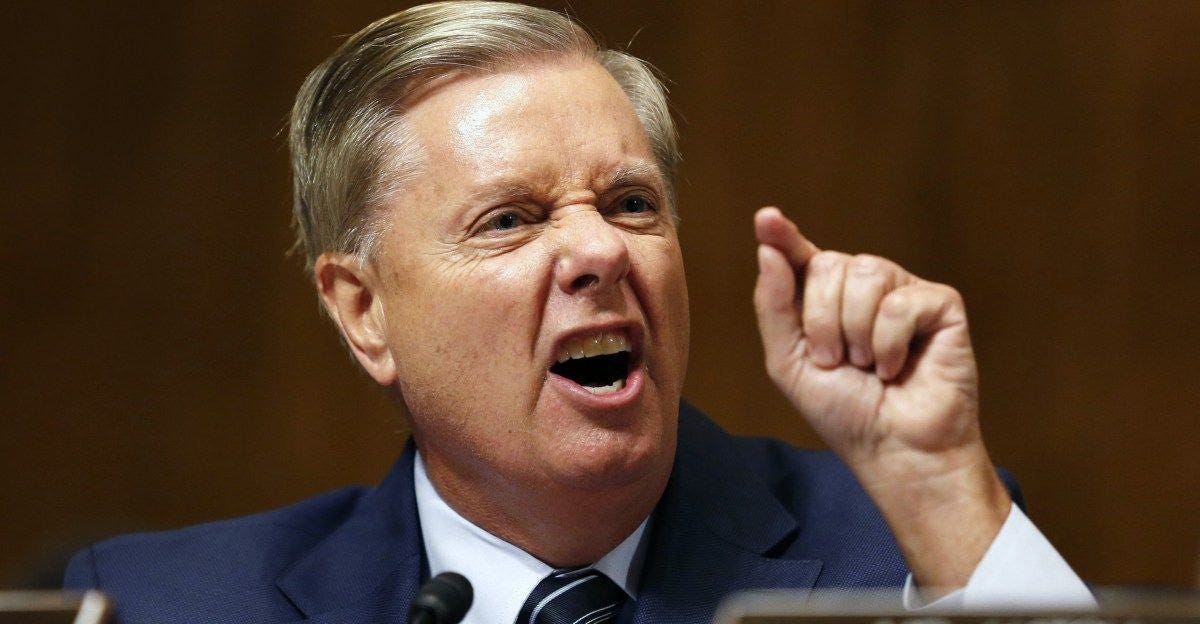
By allowing Trump to perform his pantomime of peace, Putin underscores the hollowness of U.S. moral authority. Each day that Trump plays the mediator while NATO strikes strategic Russian targets, the fiction becomes more unsustainable—and the mask slips further.
Spiderweb’s Impact on Istanbul
At the June 2nd peace conference in Istanbul, Moscow's diplomatic position remained unchanged—firm, familiar, and unsentimental. Yet the strategic context had subtly shifted. Ukraine’s high-profile success with Operation Spiderweb gave Zelensky political cover to engage in talks that many factions within Ukraine had previously deemed premature or even traitorous. By demonstrating the capacity to strike deep into Russian territory—even symbolically—Kiev managed to reframe negotiations not as an act of desperation, but as a confident strategic manoeuvre. In this sense, the operation may have achieved its most significant effect on the Ukrainian domestic front: normalizing dialogue with Russia.
Russia, for its part, arrived in Istanbul with a chilling psychological gambit. Moscow proposed a unilateral “humanitarian gesture”: the return of 6,000 Ukrainian war dead. Most of these bodies, it claimed, had been identified by forensic teams, making them eligible for full compensation under Ukrainian law. The state, by statute, must provide the families of fallen soldiers with death benefits totalling up to 17.27 million hryvnia (approximately $422,800 USD) per soldier. Should Kyiv accept the corpses and comply with its own laws, the financial burden could exceed $2.5 billion—a staggering sum for a regime already dependent on Western aid to meet basic budgetary obligations.
It was a masterstroke of macabre diplomacy—calculated not to resolve, but to reveal. Ukraine fights on borrowed resources, and increasingly, on borrowed time.
Spiderweb’s Impact
Operation Spiderweb’s success is real but narrow—a tactical humiliation, not a strategic turning point. Like a desperate football team running a trick play to narrow the score from 35-14, it makes for compelling footage but changes little. The hysteria over crippling Russia’s nuclear triad ignores a fundamental truth: unlike America, Moscow has never treated its bomber fleet as the crown jewel of deterrence. That role belongs to its ICBMs and submarine-launched missiles—systems untouched by these strikes.
Russia’s own calculus has long been shifting. As modern air defenses proliferate globally, those hulking Tu-95s and Tu-160s—once symbols of Soviet reach—now resemble relics awaiting obsolescence. The bombers persist more for prestige than necessity, their vulnerability laid bare not just by Ukrainian drones but by Russia’s own deployment patterns. This strike may accelerate what was already inevitable: the quiet demotion of Russia’s strategic aviation in favour of hypersonic missiles and silent submarines.
Many overestimate the impact of recent attacks on Russia’s capabilities to strike. The bulk of damage inflicted on Ukraine comes from Iskander-M ballistic missiles and Geran-2 drones—not Tu-95 bombers. Russia now launches hundreds of cheap, effective Gerans daily, while Iskanders—nearly unstoppable and packing heavier payloads—remain the primary tool for hitting both static and mobile targets. By contrast, Tu-95s and Tu-160s fire Kh-101 cruise missiles, which require lengthy logistical preparations, are less versatile, and are more vulnerable to air defense.
While losing even a few bombers is costly—given their irreplaceability and long repair times—their operational role has diminished compared to missiles and drones. The real significance of these strikes lies in their psychological effect: both shattering the illusion of Russian invulnerability but further galvanizing domestic support for the war. Rather than crippling Moscow’s campaign, the attacks may harden resolve, reminding Russians that the conflict is no longer confined to distant battlefields.
Russia’s Response Options
As of this writing Russia has not responded, neither through narratives nor attacks. While some clamour for nuclear strikes or overwhelming retaliation, such a reaction would only legitimize Ukraine’s provocation—proving that a handful of damaged bombers could derail Moscow’s strategic discipline. True power in war lies not in reflexive fury, but in the cold discernment between meaningful threats and mere distractions. Clausewitz called this friction—the inevitable chaos of conflict that separates the tactician from the strategist.
For now, Russia’s focus remains fixed on Ukraine’s military centers of gravity: grinding down its manpower, strangling its logistics, and dismantling its industrial base. Symbolic strikes like Spiderweb are glittering decoys, designed to lure Moscow into squandering its initiative.
That said, Ukrainian provocations can create political cover for actions that may have long been on the table. For instance, one might ask: why does Russia continue to tolerate the steady stream of Western leaders parading through Kiev, using it as a geopolitical catwalk? Or why haven’t the Dnieper bridges—crucial for Ukrainian logistics—been permanently disabled, if Russia possesses that capability?
Politically, Putin remains strong and enjoys broad domestic support, but within the security and defense apparatus, hardliner factions are likely chafing at what they see as his measured, even liberal, restraint. While the current strategy may be accepted with regard to Ukraine, there may be a different calculus forming in relation to NATO—particularly the UK, which is viewed in Moscow as an especially aggressive provocateur and a likely co-conspirator in Sunday's attacks.
The coming phase may see Moscow pivot to shadow warfare: cyber strikes, covert sabotage, and asymmetric reprisals against NATO, particularly Britain. These plausibly deniable tools offer retaliation without overt escalation, preserving Russia’s strategic focus while settling scores. The true tipping point would only come if Ukraine’s capacity to provoke were to ever outpace Russia’s willingness to endure. Until then, the smouldering Tu-95s serve not as a military setback, but as a test of nerve—one that will define who controls war’s rhythm, and who merely reacts to it.


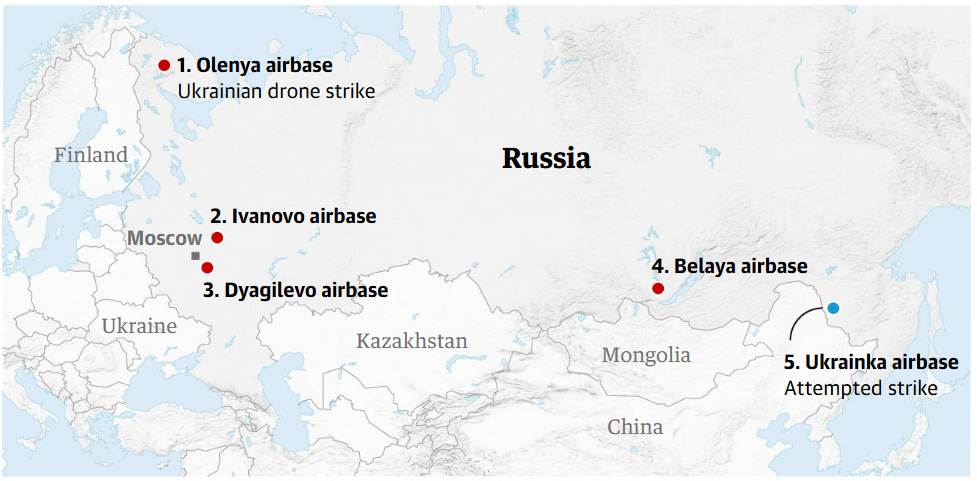
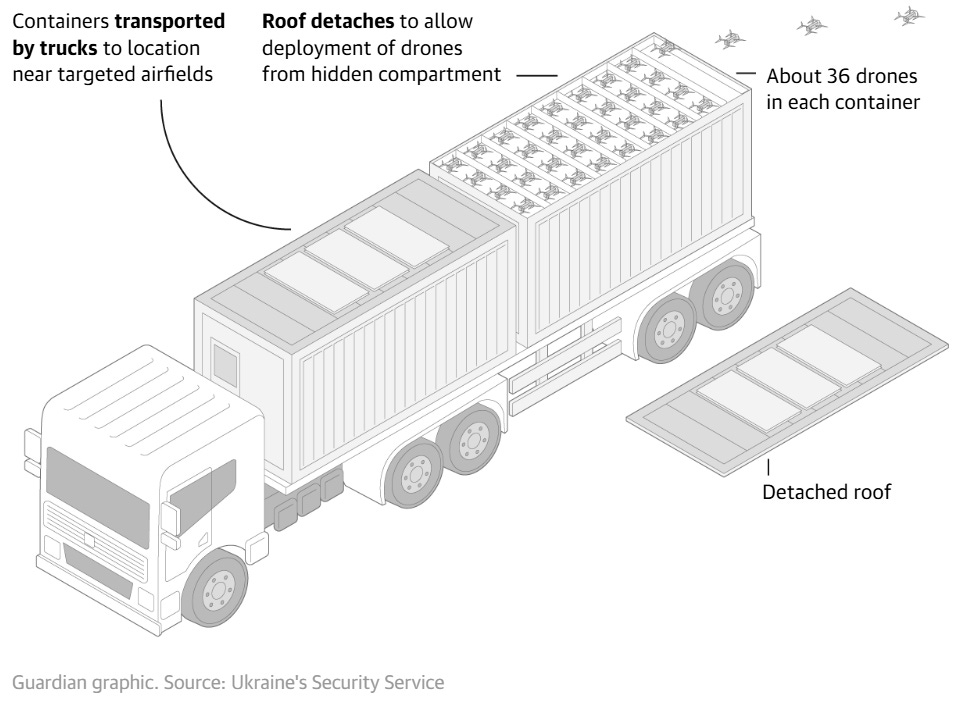
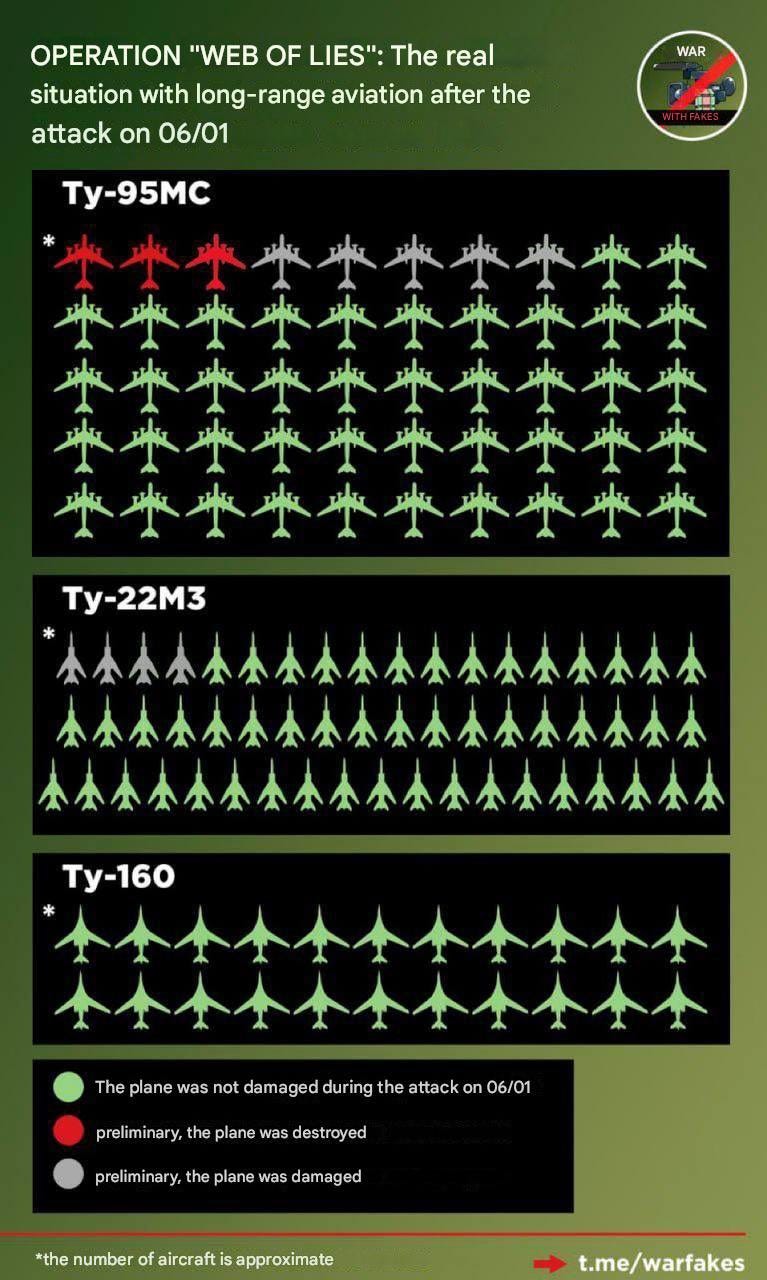

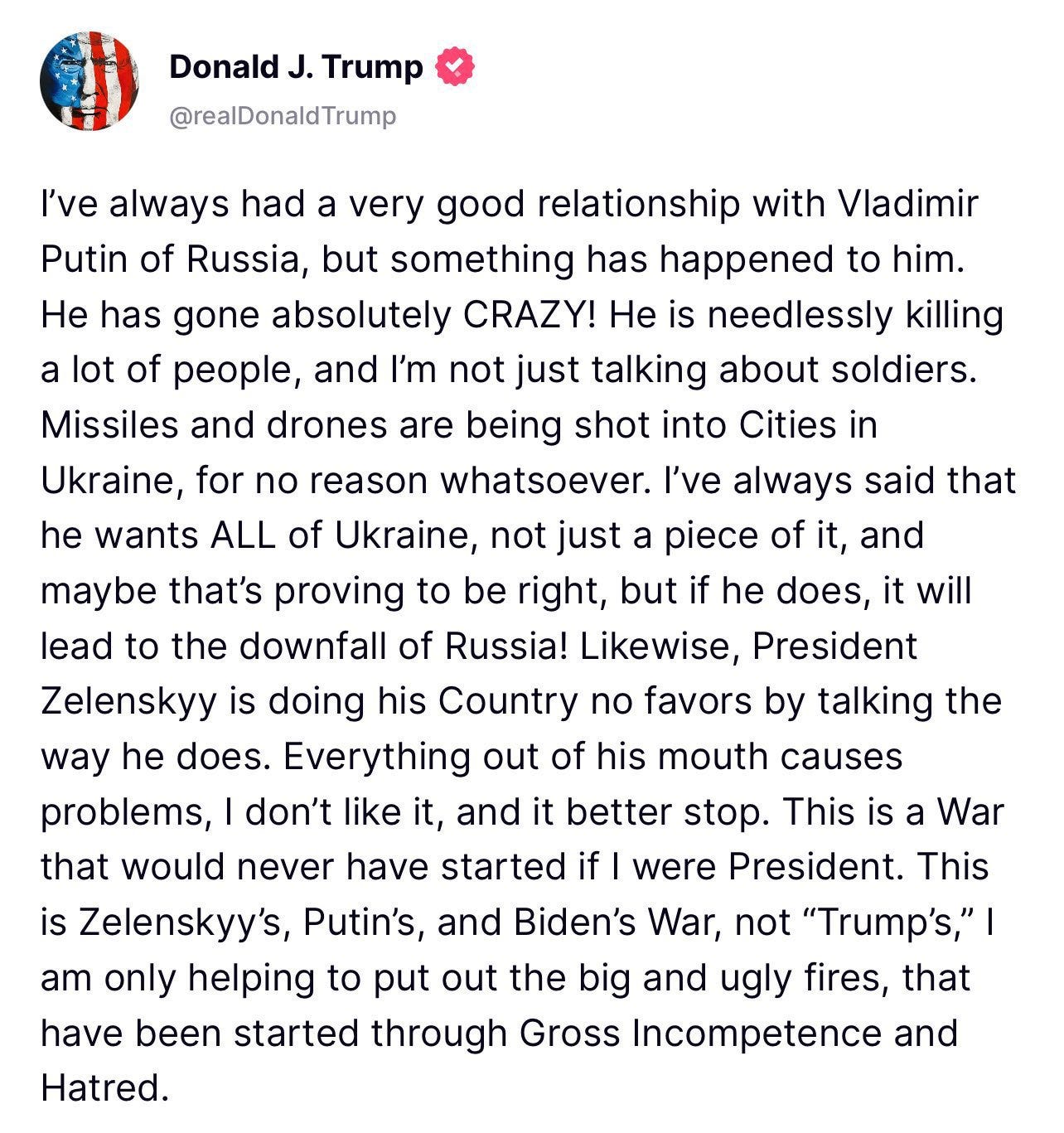
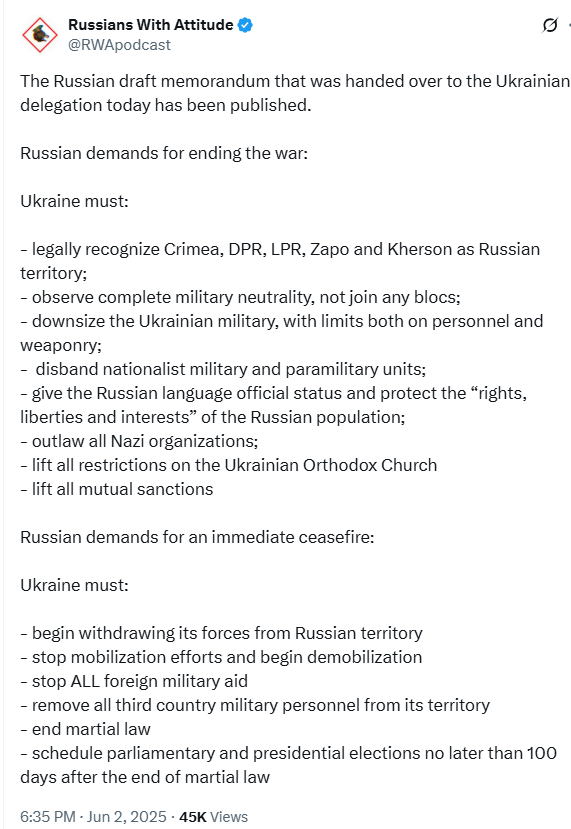
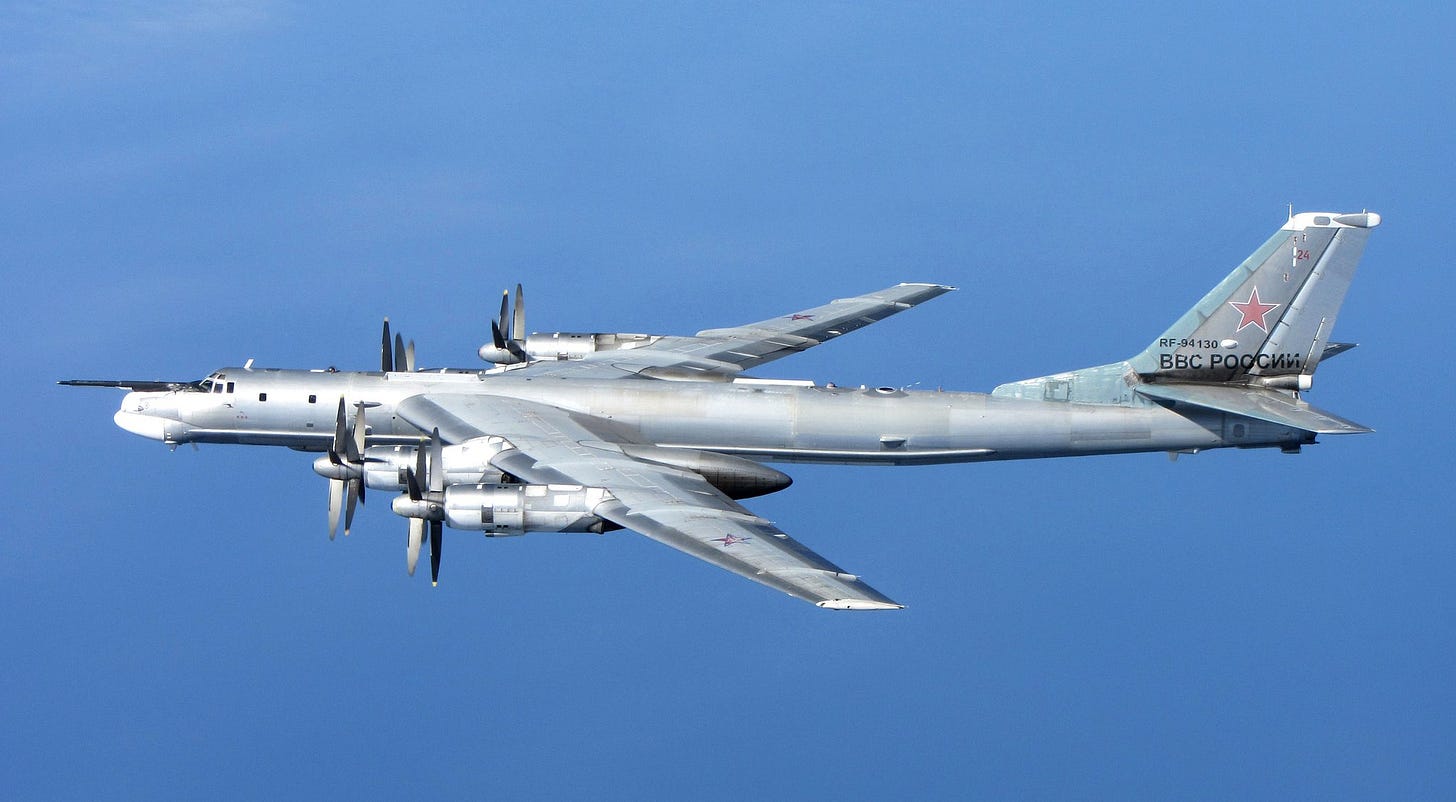
I follow many geopolitical analysts on the current conflict in Ukraine, and you're undoubtedly my favorite for the clarity of your analysis. Greetings from Argentina!
This is the best summary and analysis I’ve read.
Have you considered contacting the Alekses at The Duran for a guest appearance? Or maybe Glenn Diesen or Danny Haiphong?
You would get a lot of publicity (if you wanted to broaden your audience).